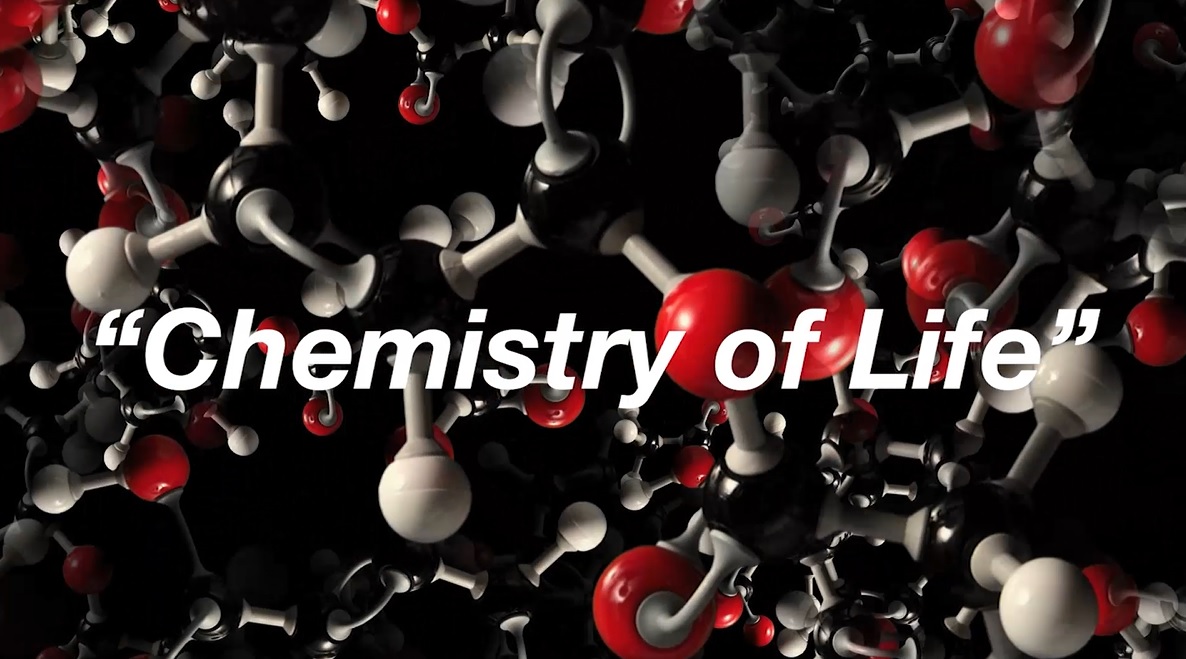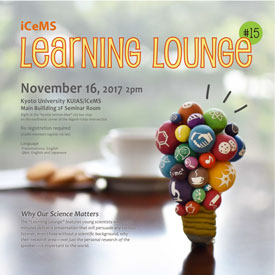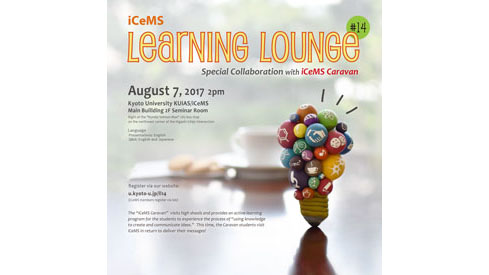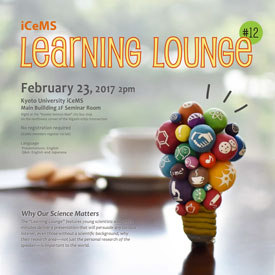iCeMS Learning Lounge #6: Akihisa Yamamoto + Georgia Kafer, 2015
Protecting Your DNA Code Dr. Georgia Kafer
Course Description
Why Our Science Matters
The “Learning Lounge” features young scientists who, in 20 minutes deliver a presentation that will persuade any curious listener, even those without a scientific background, why their research area — not just the personal research of the speaker — is important to the world.
Dr. Akihisa Yamamoto
Sticky Moments in Biology
Cells are the basic building blocks within our body, and they are bound together with a kind of ‘glue’. When this glue disappears, tissue is destroyed, and serious illness, such as cancer metastasis, occurs. Knowing stickiness may help to recognize which cells are most likely to be healthy or not. I will introduce our physical techniques to directly measure ‘stickiness’ that allows us to characterize them.
Cell adhesion is an important factor to understand how tissues and organs are constructed in living organisms. By quantitatively measuring how the adhesion strength varies over different cell species and states, we are able to understand the mechanism of tissue destruction caused by diseases, and to create novel methodologies to find the first signs of diseases. We aim to study unique phenomena that span physics, biology and medical science.
Dr. Georgia Kafer
Protecting Your DNA Code
The human instruction “manual” is written in a specialized biological code commonly referred to as “DNA”. If the DNA is damaged then parts of the code can be lost or misinterpreted which is likely to result in diseases. DNA can be damaged by sources external to the body, but is more commonly damaged by internal “everyday” biological processes. I will discuss our research that investigates how DNA damaged is repaired.
Of all the research projects I have worked on so far, my current project studying DNA damage has been the most enjoyable for me. This is because of the beauty that lies in how a cell responds to DNA damage in such a highly organised, yet fascinatingly complex way. It’s also surprising that despite this field of research beginning in the 1940’s we still know relatively little about it. And do you know what is really exciting? Any new knowledge about DNA damage has the potential to directly impact how we view, treat and prevent a huge range of human diseases.
Details
- Year/Term
- 2015
- Date
- March 31st, 2016
- Faculty/
Graduate School - Institute for Integrated Cell-Material Sciences (iCeMS)
- Language
- English
- Instructor name
- Dr. Akihisa Yamamoto(iCeMS Motomu Tanaka Lab)
Dr. Georgia Kafer(iCeMS Peter Carlton Lab)
- Place
- 2nd floor Seminar Room, iCeMS Main Building, Kyoto University
Related Courses
 Course
Course
Motonari Uesugi
Institute for Chemical Research, Institute for Integrated Cell-Material Sciences (iCeMS)
 Public Lecture
Public Lecture
Dr. Satoshi Horike, Dr. Partha Chowdhury
Institute for Integrated Cell-Material Sciences (iCeMS)
2017 Public Lecture
Public Lecture
Students from Aizu Gakuho High School, Mr. Tomomichi Kato
Institute for Integrated Cell-Material Sciences (iCeMS)
2017 Public Lecture
Public Lecture
Dr. Yousuke Katsuda, Ms. Saki Fukuoka
Institute for Integrated Cell-Material Sciences (iCeMS)
2016


